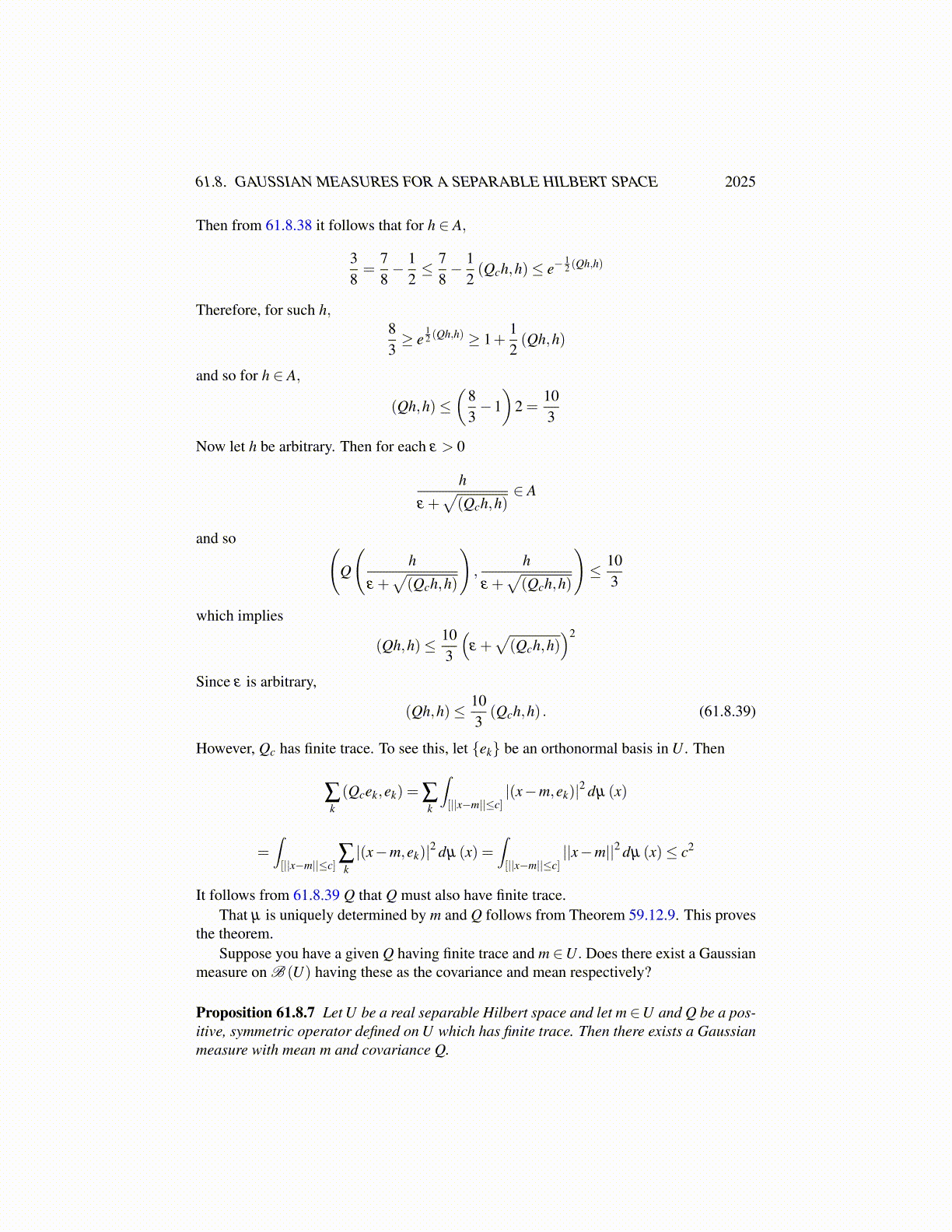
61.8. GAUSSIAN MEASURES FOR A SEPARABLE HILBERT SPACE 2025
First, the above equals∫U(x,h)(x−m,g)dµ−
∫U(m,h)(x−m,g)dµ (x)
=∫
U(x,h)(x−m,g)dµ (61.8.37)
because from the first part,∫U(x−m,g)dµ (x) =
∫U(x,g)dµ (x)− (m,g)U = 0.
Now by the first part, the term in 61.8.37 is∫U(x,h)(x,g)dµ (x)− (m,g)
∫U(x,h)dµ (x)
=∫
U(x,h)(x,g)dµ (x)− (m,g)(m,h) .
Thus|(Qh,g)| ≤
∫U|(x,h)(x,g)|dµ (x)+ ||m||2 ||h|| ||g||
and since the random variables h′ and g′ given by x→ (x,h) and x→ (x,g) respectivelyare given to be normally distributed with variance σ2 (h) and σ2 (g) respectively, the aboveintegral is finite. Also for all h, ∫
U|(x,h)|2 dµ (x)< ∞
because the random variable h′ is given to be normally distributed. Therefore from Lemma61.8.6, there exists some constant C such that
|(Qh,g)| ≤C ||h|| ||g||
which shows Q is continuous as desired.Why is σ2 (h) = (Qh,h)? This follows because from the above
(Qh,h) ≡∫
U(h,x−m)2 dµ (x)
=∫
U((x,h)− (h,m))2 dµ (x) =
∫R(t− (h,m))2 dλ h′ (t)
=1√
2πσ2 (h)
∫R(t− (h,m))2 e
− 12σ2(h)
(t−(h,m))2
dt = σ2 (h)
from a standard result for the normal distribution function which follows from an easychange of variables argument.
Why must Q have finite trace? For h ∈U, it follows from the above that h′ is normallydistributed with mean (h,m) and variance (Qh,h). Therefore, the characteristic function ofh′ is known. In fact ∫
Ueit(x,h)dµ (x) = eit(h,m)e−
12 t2(Qh,h)